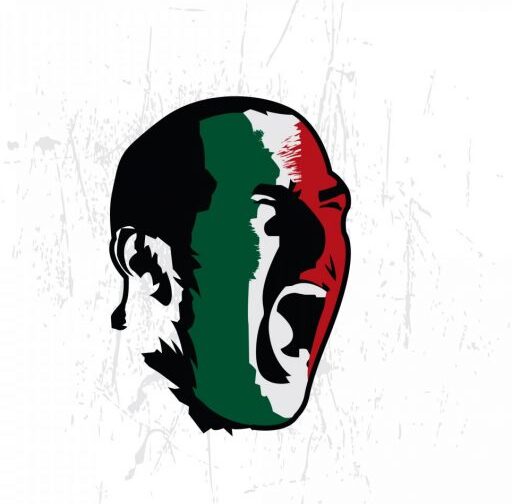 In a world of inverted wingers, false nines and overlapping wingbacks, football’s evolution can feel like its happening so quickly there’s no time to catch breath.
In a world of inverted wingers, false nines and overlapping wingbacks, football’s evolution can feel like its happening so quickly there’s no time to catch breath.
Where once every player had a set role and seldom deviated from it, that purpose is now only applicable to goalkeepers.
Yet, in Serie A, there is a flowering of players that seem to buck the trend of ‘total football’. A glance at the top scorers chart shows the likes of Gonzalo Higuain, Ciro Immobile and Luca Toni – old-fashioned centre forwards – the ‘prima punta’. One or two such players enjoying success could be explained as a freak, but with their numbers swelled by Fernando Llorente, Mattia Destro, Paulinho, German Denis and Alberto Gilardino, there is a definite trend.
Such strikers used to be ‘de rigeur’; every club’s attack had a central pivot, be it Gabriel Batistuta lighting up the Stadio Artemio Franchi for Fiorentina or Igor Protti firing in goals from all sorts of angles for Bari. As formations developed, the strikers role changed. Where the physical prowess of Protti was a great attribute, a more technical striker brought more to a team’s overall play.
Football is nothing if not a game of spaces. As such, in light of players whose best work was done in the spaces between the traditional positions – primarily the forwards who dropped deep to find the ball, Roberto Baggio, Alessandro Del Piero – even Francesco Totti – attacks that used to come from the wings were more in central areas. That meant strikers were outwitting defenders rather than out-muscling or outpacing them.
As with all tactical shifts, however, an alternative emerged and has proven to be a counteraction to the possession and control exerted by Juventus, for example. In order to win games against teams who monopolise the ball, coaches started to sit their teams deep in order that, once they won possession, they could strike swiftly and powerfully on the counter-attack.
 In very simple terms, it is the difference between action and reaction; and it manifests itself most obviously in games between Barcelona and Real Madrid. The Catalans are renowned for their tiki-taka, while the Merengues have built a team based around transitioning from defence to attack at breakneck pace.
In very simple terms, it is the difference between action and reaction; and it manifests itself most obviously in games between Barcelona and Real Madrid. The Catalans are renowned for their tiki-taka, while the Merengues have built a team based around transitioning from defence to attack at breakneck pace.
Strikers have become valued for their ability to win the ball in the air from defensive clearances; the middle link in the chain of attack. Serie A has its fair share. Walter Mazzarri had success with Napoli playing reactive football, and his legacy lives on with Gonzalo Higuain playing Edinson Cavani’s role.
Up and down the peninsula, this style of play is garnering rewards. In Verona, Luca Toni is enjoying his most successful season in front of goal since the mid-2000s. His 17 goals and 4.2 aerial duels won per game for Hellas Verona mark him out as a stand-out performer in Serie A. This at the age of 36; an Indian summer maybe, but his move from Fiorentina for first team football looks a wise one now.
Fiorentina only let the veteran leave as they were banking on an upgrade from Toni in the form of Mario Gomez, though the German has been unable to demonstrate his undoubted pedigree thus far. His spell in Italy has been scuppered by injury, so it may be next season that he flourishes.
At Torino, things are slightly different. Ciro Immobile has formed a partnership with Alessio Cerci that sees the younger man generally staying in central areas as the Granata surge forward, while Cerci zips around either side of him, looking to provide a ball into the box for his team-mate to finish off. With Immobile at the top end of the scorers chart, it is plainly working; Cerci is second only to Roma’s Gervinho in the assists chart.
That’s a considerable feather in Immobile’s cap, as he first came to prominence as part of a three-pronged frontline with Lorenzo Insigne and Marco Sansovini at Pescara. Being able to fill differing roles remains an important part of the modern footballers make-up.
 It is an interesting aspect of Rudi Garcia’s Roma that their side plays in a style that lends itself to fast breaks, but were able to flourish initially without Mattia Destro. Though good in the air, Destro isn’t quite a destroyer in the mould of Higuain or Toni, but his return to the team has seen Roma’s fortunes improve as they chase Juventus.
It is an interesting aspect of Rudi Garcia’s Roma that their side plays in a style that lends itself to fast breaks, but were able to flourish initially without Mattia Destro. Though good in the air, Destro isn’t quite a destroyer in the mould of Higuain or Toni, but his return to the team has seen Roma’s fortunes improve as they chase Juventus.
There is nothing to suggest that powerful centre forwards are becoming a thing of the past; the success of Immobile shows that even a more versatile player can have success in the role.
Football, and its formations, may move inexorably forward, but lessons can always be taken from the past. This victory of the throwbacks shows just that.


